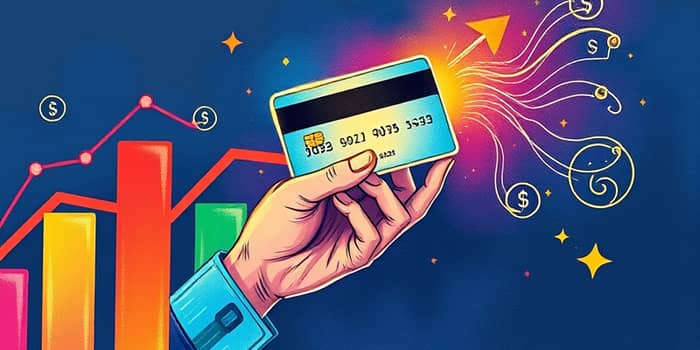
Credit card limits define the maximum amount you can charge to your account, directly influencing your buying power and fiscal health. Understanding these limits empowers you to make strategic choices and build a stronger credit profile.
Whether you’re a new cardholder or a seasoned user, grasping the nuances of credit line management can unlock significant financial opportunities and offer peace of mind.
A credit card limit, or credit line, is the maximum amount a person can spend on a card, as determined by the issuer. It represents the total credit available at any given time, decreasing as purchases are made and replenishing when payments clear.
For example, if your card has a $5,000 limit and you’ve spent $1,500, your available credit stands at $3,500. Understanding this simple math can prevent unexpected declined transactions and unnecessary fees.
Credit card issuers evaluate multiple factors to set or adjust your limit. Each factor paints a detailed picture of your financial reliability and repayment capacity.
Issuers may also consider your employment status, education level, and even banking relationship when evaluating your limit. These elements combine to create a comprehensive risk profile.
Credit limits vary widely based on card type and individual profiles. Below is an overview that captures common ranges:
For students and those establishing credit, limits often start near $200. As credit scores improve, many users find themselves eligible for cards with limits in the mid-to-high four figures within just a year of responsible usage.
Professionals with stable incomes and strong credit histories can secure limits well into the five-figure range, offering substantial purchasing flexibility.
Your credit limit directly ties into your credit utilization ratio—the percentage of credit you’re using relative to your total available. Keeping this ratio low is key for strong credit scores.
High utilization can signal financial strain to prospective lenders, even if you pay your balance in full each month. This perception may lower your credit score or limit your eligibility for premium cards.
Conversely, a higher credit limit with a moderate balance can improve your ratio, demonstrating responsible credit management and potentially unlocking lower interest rates on future loans.
While modern cards often decline transactions that exceed the limit, some issuers may allow over-limit charges, leading to steep consequences.
Setting spending alerts and making timely payments can mitigate these risks, preserving both your wallet and your creditworthiness.
Imagine Sarah, who has a $2,000 credit limit and spends $1,600 in a month—an 80% utilization ratio. Even though she pays the balance on time, her credit score dips because the high ratio signals risk.
By contrast, Jake with a $10,000 limit uses $2,000 monthly—20% utilization. His score remains strong, and he qualifies for exclusive rewards cards with premium travel perks.
These examples illustrate why it's not just about the balance you carry, but how that balance relates to your available credit.
Proactive habits help you leverage your credit line as a tool rather than a trap.
By embedding these strategies into your routine, you can avoid surprises and keep your credit strong over time.
Credit limits are dynamic. Issuers may offer automatic increases after a period of consistent on-time payments and responsible usage. However, you can also initiate changes manually.
Requesting a limit increase often involves a soft or hard credit inquiry and may require updated income information. A successful increase can improve your utilization ratio and open doors to better card benefits.
Requesting a limit decrease can be a strategic move to discourage overspending or reduce potential fraud exposure. Remember that lowering your limit can impact your utilization, so plan accordingly by paying down any existing balance first.
Remember to maintain updated information with credit bureaus. Even small changes in your employment or address can influence decisions and help your issuer more accurately assess your risk profile. Regularly reviewing credit reports ensures there are no inaccuracies hiding under the surface that might limit your credit potential unexpectedly.
Technology is driving innovative limit controls and reporting tools. Some issuers now offer:
These tools reflect a shift toward more personalized credit experiences. As financial technology evolves, we can expect further innovations such as AI-driven credit recommendations and instant limit adjustments based on real-time cash flow analysis. Staying informed about these features can give you an edge in the competitive landscape of credit management.
Your credit limit is more than just a ceiling; it’s a reflection of your financial aptitude and trustworthiness. Managing this number effectively can unlock opportunities such as lower interest rates, premium rewards, and more favorable loan terms.
By understanding how limits are set, monitoring your spending, and making informed requests for changes, you harness the full potential of your credit. Let your credit limit serve as a springboard, not a barrier, to achieving your financial dreams.
Embrace these best practices, leverage emerging tools, and watch as your credit grows alongside your aspirations.
References













